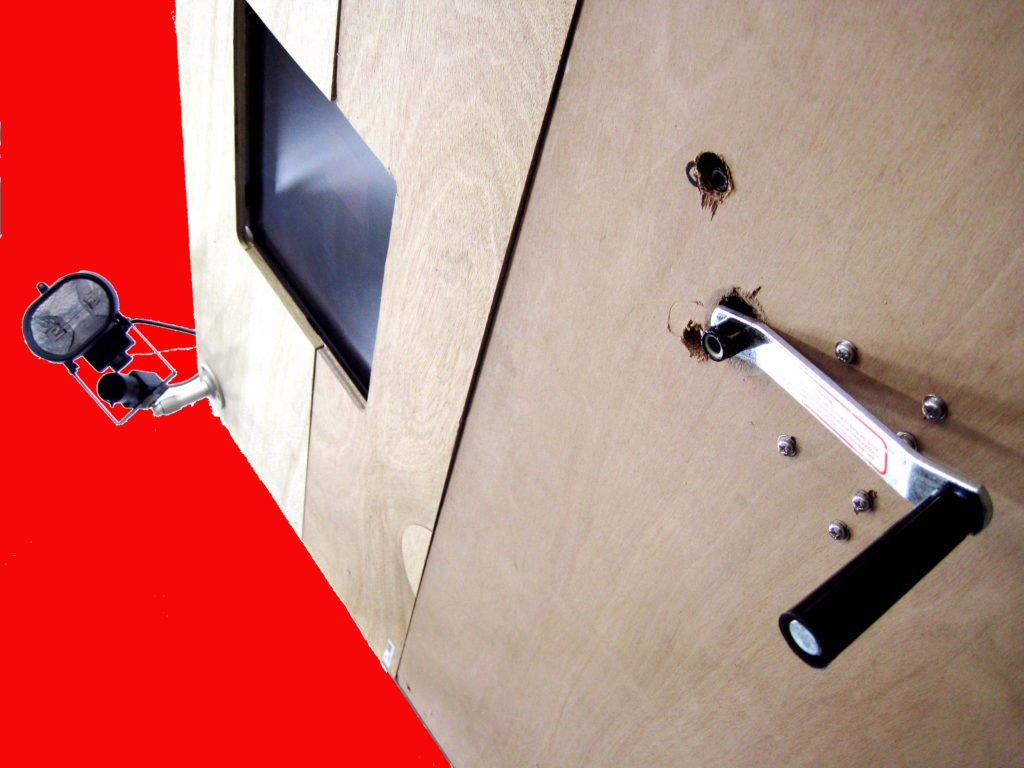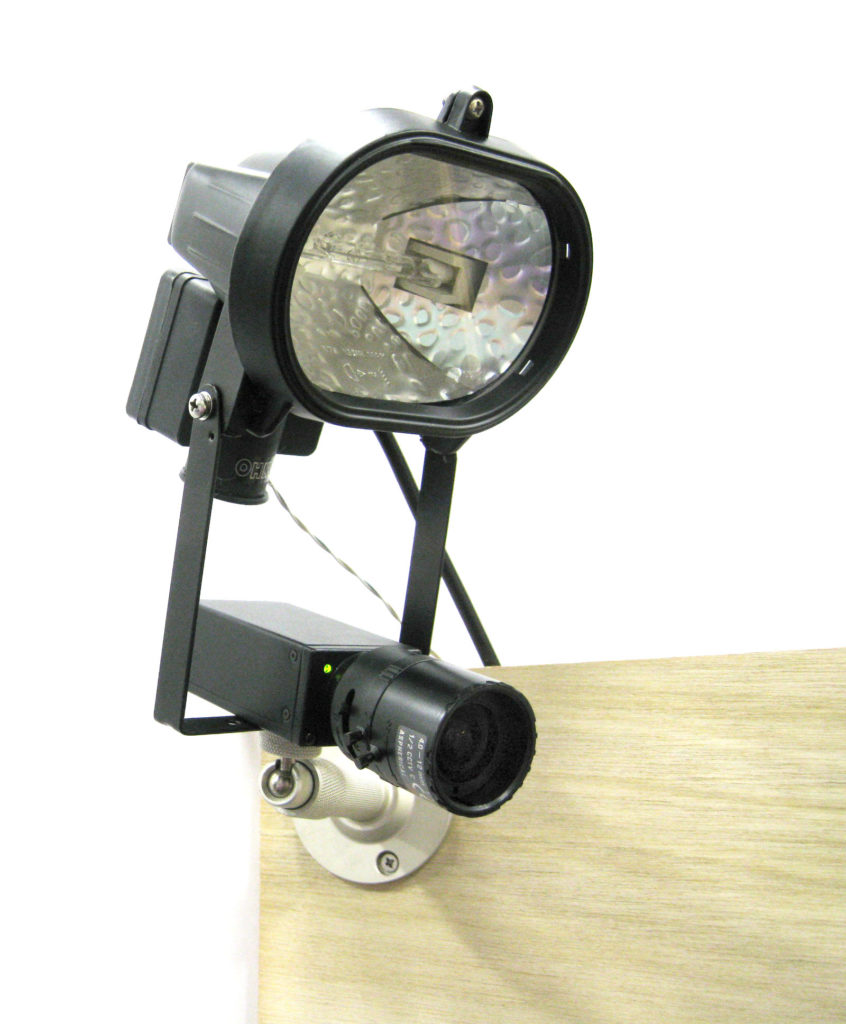CrankShafted is an art installation exploring a tradeoff between privacy and personal gain. Digital rights are managed by taking portraits of those turning a crank for (ruthless?) commercial and/or aesthetic exploitation, in exchange for downloading (copyrighted) material. In this way, viewers are forced into an initial bargaining position with a machine embedding a secret agenda (perhaps not very dissimilar to that held by big internet companies).
 |
Walking up to a screen showing a blurry image, the viewer may hesitate for a moment before placing a hand on a visibly protruding crank. As the viewer cranks out of curiosity, the image begins to unblur and edge toward a discernible form. This prompts the viewer to proceed, thus pumping more and more bits from the internet (the gradual revelation of the image is designed to be reminiscent of old HTML browsers such as NCSA Mosaic and early revisions of Netscape Navigator). As the download finishes, what looked like a security camera nearby produces a strong flash, capturing the image of the user, her portrait inserted in between frames of a composite movie which will be marketed, auctioned, and pirated online. A web address on the statement points them to a website where viewers will be able to see a movie composed of startled faces for sale.
 |
 |
 |
Crankshafted is closely related to other performance work that satirizes a society where surveillance and privacy exploitation is pervasive. In particular, the Surveillance Camera Players performance of Beckett’s Waiting for Godot and Orwell’s 1984 in subway stations provided us inspiration, but first and foremost, we were intrigued by the blithering attitude of internet users regarding their own privacy rights.
Those who crank will immediately gratify their curiosity by seeing the movie frames progressively rendered, despite a statement accompanying the installation that clearly informs of this (seemingly illegal) trade and its consequences. A statement that few will bother reading – as it is the case with most copyright notices. This work is just a parody of the cultures of piracy and digital rights management: the copyrighted material is presented in conformance with fair use (the amount of the copyrighted work accessible to the individual viewer will be insignificant in relation to the whole work). Moreover, viewers who do not want their faces to be used in the movie will be able to opt-out. It is easy though to upgrade the work so that it actually challenges copyright laws: it will always be up to the (informed) spectator to decide to crank the system or not.
 |
 |
 |
[work rejected Siggraph Art Gallery 2008 – to be continued…]